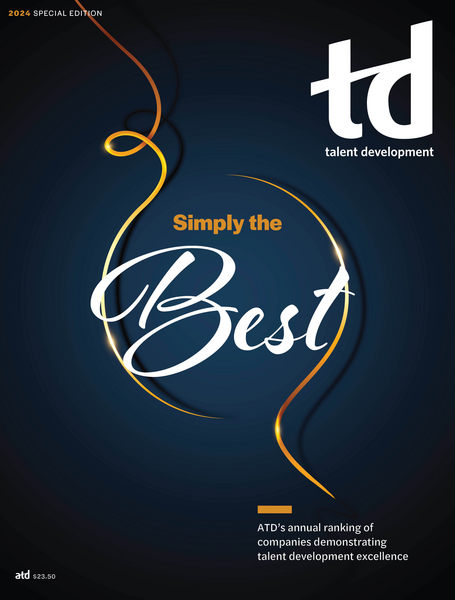TD Magazine Article
The Science Behind Purpose and Learning
The recipient of this year’s ATD Thought Leader Award is a CEO, speaker, and author.
Fri Jun 14 2024

Bookmark
Britt Andreatta is the CEO of Brain Aware Training; a sought-after speaker; and the author of several books on the brain science of success, including the most recent Wired to Become: The Brain Science of Finding Your Purpose, Creating Meaningful Work, and Achieving Your Potential. She has more than 25 years of experience in the talent development industry, with a keen focus on neuroscience. The recipient of this year's ATD Thought Leader Award, Andreatta recently spoke with TD magazine. The interview has been lightly edited for clarity and length.
You've noted that your purpose is to "use brain-based strategies to help people and organizations rise to their potential." How do you recommend readers home in on their own sense of purpose?
We are wired for purpose—it is part of our biological makeup as humans, and living a life of purpose leads to all kinds of physical and mental health benefits. Purpose is different from happiness, and the key to a meaningful life is to have them in balance.
Finding our sense of purpose is meant to be a journey that unfolds over time and shifts with life's experiences. The good news is that our bodies come with an inner compass of feelings and emotions that gives us clues and guides us. Some people find many purposes over their lifetime, and others focus on one.
Why should TD professionals bring a brain-science lens to their work?
All human behavior is sourced in our biology, and if we wish to develop skills or change behaviors, we must align with how the brain works. Several discoveries in neuroscience apply directly to our work in TD and learning; utilizing brain-based principles will make your programs significantly more effective. Some examples include priming the brain, leveraging the mirror neuron system through demonstrations, creating the environment for flashes of insight, designing habits, and—of course—building enough repetitions through practice.
What do TD practitioners find most challenging when it comes to incorporating science-based learning principles into training design and delivery?
Any effort to use science-based principles is valuable, and I encourage learning professionals to keep expanding their knowledge and trying new things. Thinking of myself as a habit designer transformed how I approached designing and delivering learning for the better. I also want to acknowledge that it's impossible to keep up with every new development, so find sources you trust who can help you maximize your efforts and resources. I believe we all benefit when we live in the spirit of continuous improvement, honestly assessing the results of our efforts and making changes as needed.
What are your habits for continuous learning?
I'm naturally curious and an avid reader, so I am always learning something new. When I am researching a topic, I delve deeply into scientific journals, making a point to seek a wide range of viewpoints from scholars around the world. Usually, my passion leads to a new book or training, so people can literally see the trail of my curiosity in my work. For new skills, I know that it will be awkward and uncomfortable at first, so I intentionally lean into repetition and rewards until the new habit is automatic. And of course, I stay connected to organizations like ATD, attending conferences and networking with my peers. I love being part of this tribe of people who care deeply about bringing out the best in others.

More from ATD
